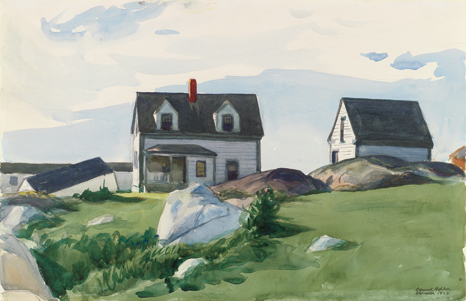Hopper

Prints and Watercolours

For many years Hopper’s painting failed to find favour with the public or critics and he was thus obliged to work as a commercial illustrator, an activity in which he was gifted but which he loathed. In 1915 he began to experiment with copper-plate etching. An important precedent in the use of this technique was provided by Manet, although Hopper’s key point of reference was Rembrandt, whose prints helped him to understand the importance of light and to make use of it in prints in order to create the atmosphere and character of the scene depicted. Between 1918 and 1923, the year he abandoned this technique, Hopper made around 30 prints in which he established the principal themes and subjects that he wouldsubsequently develop in his paintings. These etchings were extremely well received by the American art world and by museums and in 1923 the Brooklyn Museum acquired one of them, which was thus the first work by Hopper to enter a museum.

Edward Hopper (Nyack, 1882 - New York, 1967). Houses of Squam Light, Gloucester.
- Año
- 1923.
- Técnica
- Watercolour on paper. 28.6 x 44.3 cm.
- Propiedad
- Museum of Fine Arts, Boston, bequest of John T. Spaulding;
inv. no. 48.716
During his years of training at the New York School of Art, Hopper learned the technique of watercolour, which had important precedents in the American tradition. Around the end of the second decade of the 20th century he began to work on a series of watercolours on landscape subjects, following a direction marked out by the American artist Winslow Homer. In contrast to Homer, Hopper’s focus was not that of nature nor the rural landscape but rather urban or suburban views. In 1925 the art dealer Frank Rehn showed a group of Hopper’s watercolours at his gallery in what was the artist’s first solo exhibition. All the works exhibited were sold, a success that allowed Hopper to give up his work as an illustrator and devote himself entirely to painting. By this date he was forty-three.




